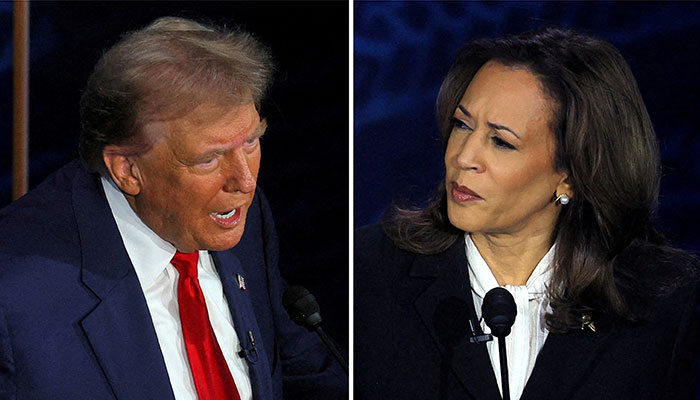[ad_1]

The US president is elected by a process known as Electoral College, which was established by the founding fathers.
It is a method, where a group of electors is selected to formally elect the president of the United States for four years. It comprises 538 electors, matching the total of congressional representatives.
Each state selects its own electors based on population size. As the population is not fixed, the number of electors assigned to each state may fluctuate accordingly.
America’s unique presidential selection system
After a person casts their ballot for a presidential candidate in the general election, their vote is added to their state’s total count.
Every state has different rules that evolve over the years. In Washington, DC, and 48 states in the US, the winner gets all the electoral votes the states are promised.
However, Maine and Nebraska are two exceptions that use a proportional system to allocate electoral votes to the candidates.
To win, it is essential for a candidate to bag at least 270 electors out of 538 electors, as this represents a simple majority of about 50.2%.
The winner of the general election is announced on the night of the election. However, in mid-December, the members of the Electoral College officially cast their vote for a presidential candidate that the voters had elected.
It is not essential for the electors to vote for the leading candidate (with majority votes). However, in some states, the people chosen to cast votes for the president (electors) must vote for the popular candidate. If they do not follow the popular vote, they might have to pay a fine or even face legal trouble.
Due to the distribution of electoral votes in each state, a candidate can win the most votes nationwide but still lose the presidential election. This has happened five times in history, once in 2016 and 2000, and three times in the 1800s.
If no candidate bags 270 votes, the House of Representatives will decide the winner of the election. This has happened twice in 1800, with Thomas Jefferson (elected by HOR), and in 1824, John Quincy Adams gained power as president through a similar procedure.
Demolishing of the electoral vote
There has been an ongoing debate over reforming the Electoral College. However, the reform requires a amendment to the US constitution. There are suggestions for replacing the electoral vote with the popular vote.
The reason is that the final decision of the presidential elections is based on mere swing states, where elections are decided by a small margin. Only a few people who live in the swing states determine the presidential elections.
Congressman Jamie Raskin (D-MD) believes that the Electoral College marginalises the majority of Americans.
Nevertheless, the election results in each state are counted and can add some difference to the total result of the elections. The power or authority in every statehouse and the composition of the Congress can be impactful regarding which laws are passed or not, as well as what actions the government takes overall. The president is not the only authority in the system of government.
On the contrary, the Electoral College is a unique feature of the US election process. It was previously created to find common ground between the proponents and the opponents of the direct popular vote.
Despite suggestions of reforming the Electoral College, the system still determines the outcome of the election process.
[ad_2]
Source link